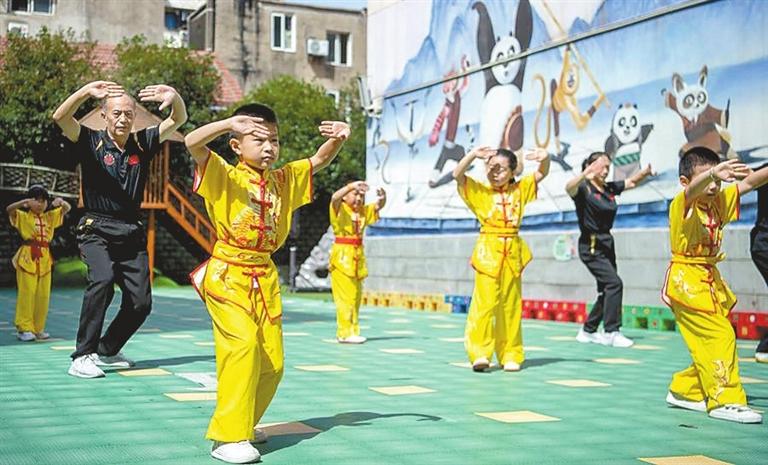



DEFYING the stereotype of Chinese schools with their heavy workloads and extreme emphasis on good scores, a primary school in Northeast China has been transformed into a playground where students spend one-third of their school day on physical exercise. Students at No. 9 Primary School in Hunnan District of Shenyang, a city in Northeast China, have access to around 20 sports activities ranging from rock climbing and rowing to unicycling. Additionally, they can enjoy a playground equipped with three giant 16-meter slides and a “mountain” constructed from 1,400 tires. “Every activity is carefully selected. Rock climbing strengthens upper body muscles and aids in the recovery of abnormal spinal curvature,” said headmaster Hou Mingfei. “Rowing fosters a competitive spirit and teamwork, while unicycling helps students coordinate their bodies, cognition, and emotions.” “Play is the most direct way for children to be happy,” added Hou, mentioning that over 90% of the school’s 2,500 students can ride a unicycle. The focus on sports has yielded significant health benefits, with the school’s obesity rate kept under 3% and myopia rate at only 13.88%, well below the national average. Focus on sports Hou’s school is part of a growing trend in China, where educational institutions are increasingly recognizing the importance of sports and fitness. This shift aims to address health issues among students, including myopia, obesity, and scoliosis. In 2022, over half of Chinese children and adolescents were nearsighted, while nearly one in five between ages 6 and 17 was overweight or obese as of 2020, as per official data. Additionally, in 2019, 2.8% of primary and middle school students were found to have abnormal spinal curvatures. The country has initiated various programs to promote holistic youth development, such as giving more weight to sports in high school entrance exams and implementing the “double reduction” policy to lessen the burden of homework and after-school tutoring. Hou’s school in Shenyang is not alone in prioritizing sports. Primary and middle schools in Beijing have creatively introduced a variety of activities like lion dancing and fencing during breaks. In Changping District alone, 90% of schools have football teams, with the district hosting over 4,700 matches annually at both district and school levels. These efforts have shown results, with the myopia rate among Beijing’s primary and middle school students dropping by 1% in 2023 compared to 2022, according to data from the Beijing Municipal Education Commission. Contrary to the belief that spending more time in playgrounds negatively affects academic performance, Hou in Shenyang stated that most children have actually performed better in exams after engaging in more sports. Hou’s innovative approach has garnered praise from Yao Ming, president of the Chinese Basketball Association, who remarked, “He has established an amazing school that allows children to have fun in sports and unlock the infinite possibilities in life.” Promoting traditional activities As China aims to become a powerhouse in sports, more schools are advocating for sports, both modern and traditional. Seven-year-old Shao Qixuan is a beneficiary who started learning Azure Dragon Fist, a style of martial arts, over a year ago when she was in kindergarten. Now in primary school in Wuhan, Central China’s Hubei Province, Shao continues to practice with friends every weekend, regardless of the weather. Over the past year, Shao’s mother, Ling Feifei, has observed her daughter growing stronger. “She has never requested sick leave,” Ling said, highlighting that martial arts are a part of traditional Chinese culture and that schools should offer more sports activities to improve children’s physical fitness. In Yangjiafan Central Primary School in Shiyan, Hubei Province, about 2,000 students practice martial arts every morning. Situated at the foot of the Wudang Mountains, famous for Taoist martial arts, the school introduced martial arts in 2016 to instill perseverance among its students, of whom a third are the left-behind children of migrant workers. Local schools have integrated Wudang martial arts into their physical education classes, according to the local municipal education bureau. “Practicing traditional martial arts can cultivate students’ endurance and willpower and enhance their confidence,” noted Zhou Xueying, the school’s headmaster. His sentiment was echoed by Zhang Longfeng, a lecturer at the China National Academy of Educational Sciences. “Unique sports and traditional programs can inspire more students to love exercise, effectively reduce their screen time, and promote their physical and mental well-being,” Zhang affirmed.(Xinhua) | 
